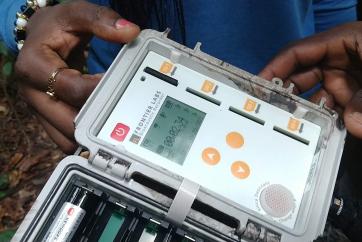Recording and analyzing soundscapes can be an effective way of monitoring changes in animal communities and also the presence of people in forests. A 2019 commentary published in the journal Science by Mongabay CEO Rhett A. Butler and research biologist Zuzana Burivalova with The Nature Conservancy argued that bioacoustics can fill the gap between the bird’s-eye view of satellite imagery and the fine focus of on-the-ground surveys, to give a clearer picture of animal population trends. Further, when such recordings are collected in centralized repositories and analyzed with the help of algorithms to identify key sounds that are present or missing, bioacoustics can enable near-real time interventions against illegal logging or hunting, and it has the potential to be an important tool in assessing what’s working, and not working, in conservation from the health of protected areas to corporate adherence to sustainability certifications or zero-deforestation commitments.



